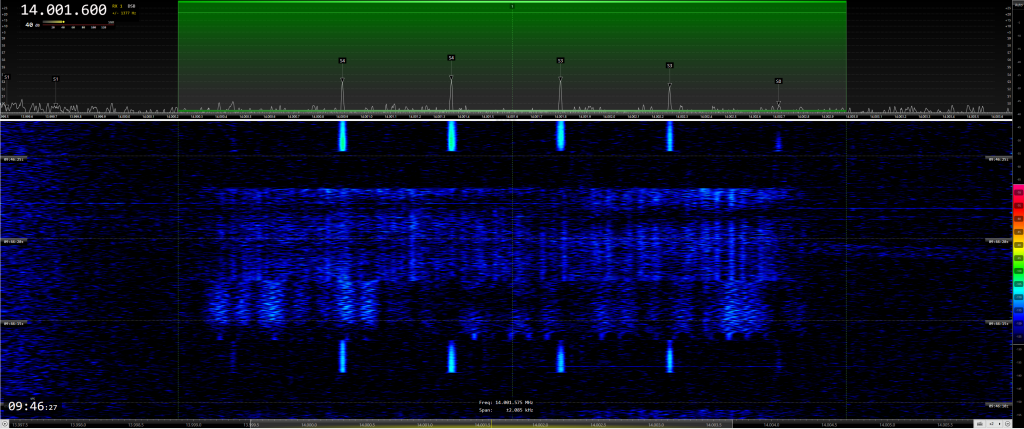Phase shift keying or PSK is a form of angular modulation that consists of varying the phase of the carrier between a certain number of discrete values. In the PSK modulation type , the modulating signal is a digital signal and, therefore, with a limited number of states.
Many transmissions using MIL modes based on PSK and its variants can be received in the bands allocated to amateur radio. Here we show some fo the most usually observed
CIS-12
It’s a widely used system in many Russian military scenarios, and is frequently found on HF radio. It is a generic data modem that can be used with a variety of equipment, including teletypewriters and voice encryption units.
Modulation: 12 carriers DBPSK or DQPSK + pilot tone
ITU classification of emissions: J7D
Bandwidth: 2.7 kHz
Baud rate: 12 x 120 Bd
In “Idle” mode it does not transmit data.
Much less frequently, in some occasions CIS-12 DSB (Dual Side Band) transmissions can be observed. CIS- 12 DSB bandwidth = 7 kHz. ITU classification of emissions: B7D
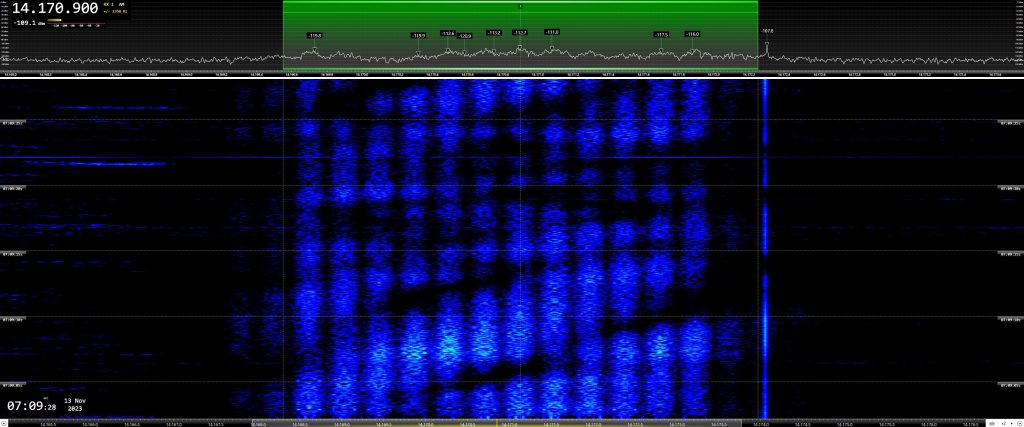
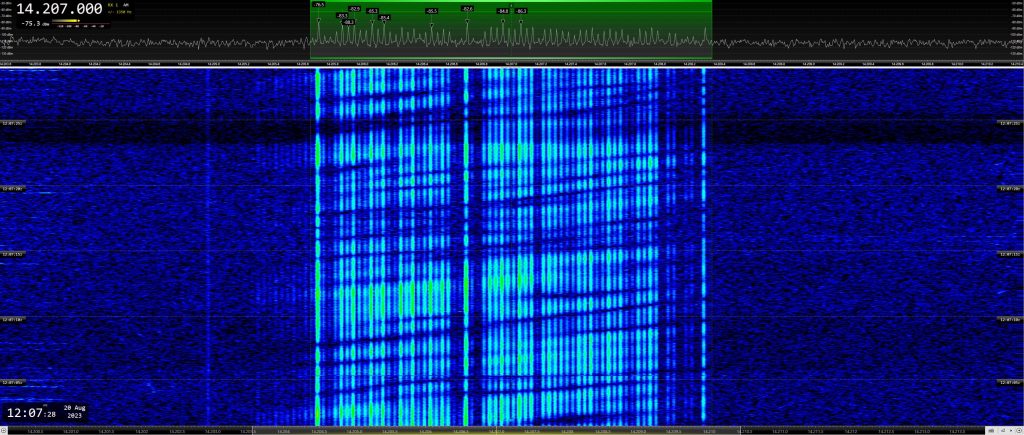
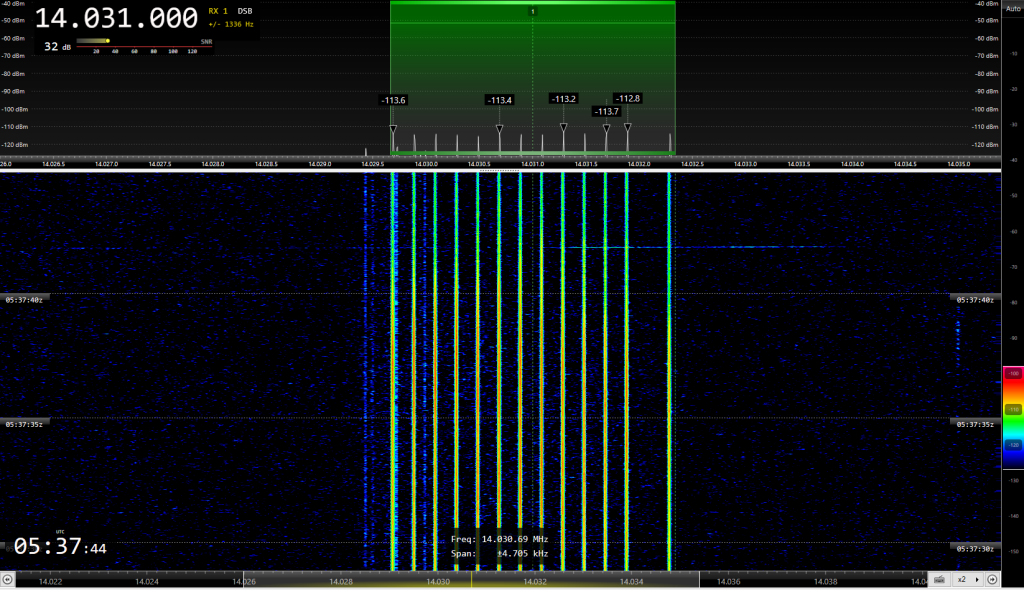
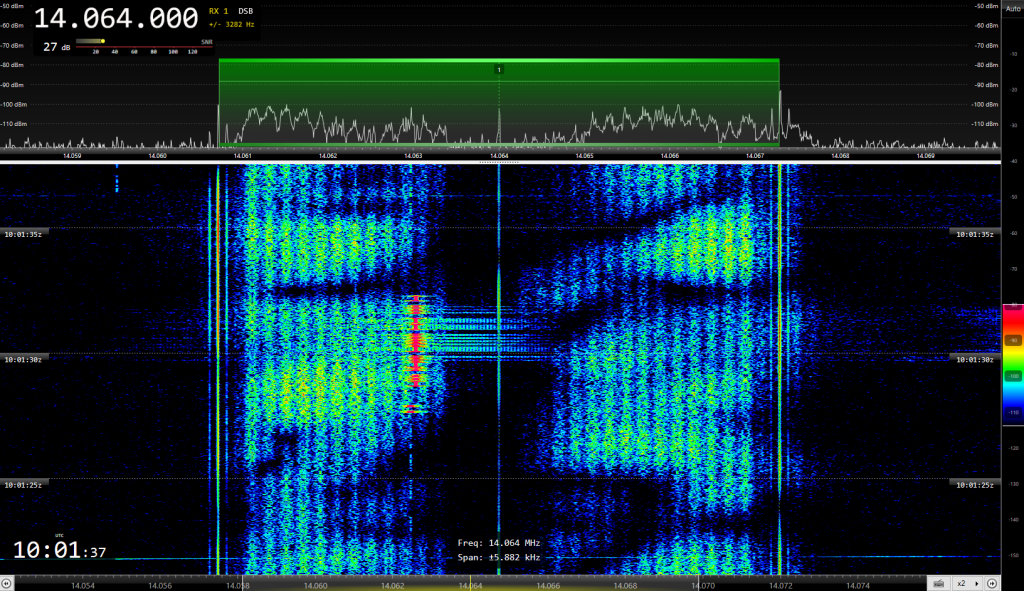
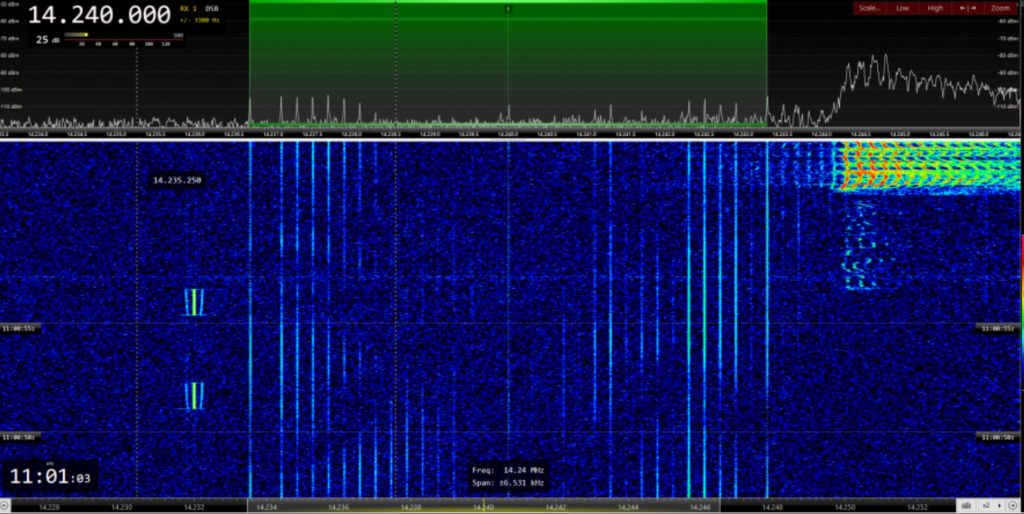
Audio
Video
LINK 11
LINK 11 CLEW
LINK-11 is a tactical data link standard used by NATO and the United States Armed Forces for Maritime Tactical Data Exchange. It is the primary means of exchanging data, such as radar tracking information. Additionally, it is used for radar coordination and weapons fire control.
Modulation: 16 tones: 15 carriers modulated with DQPSK + Doppler tone
ITU classification of emissions: G7D
Bandwidth: 2.4 kHz
Baud rate: 75 Bd or 45.45 Bd
Depending on propagation conditions, LINK-11 can also be transmitted in (DSB (Dual Side Band) mode. Dual side band gives the receiving station more redundancy when receiving the signal. The receiving station can decide, based on the quality of the signal, which side band to receive. LINK 11 DSB’s bandwidth is 6 kHZ. ITU classification of emissions: B7D
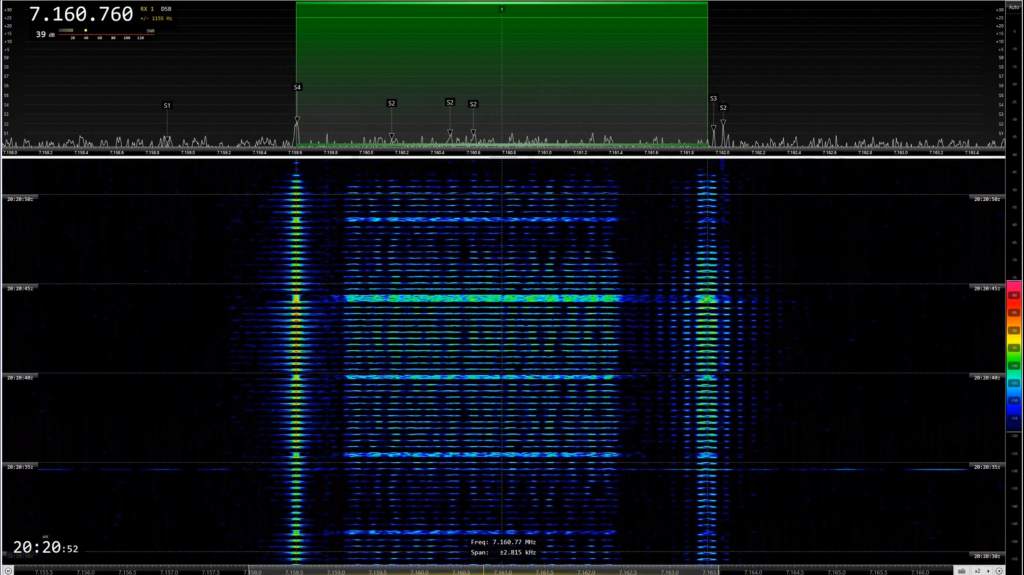
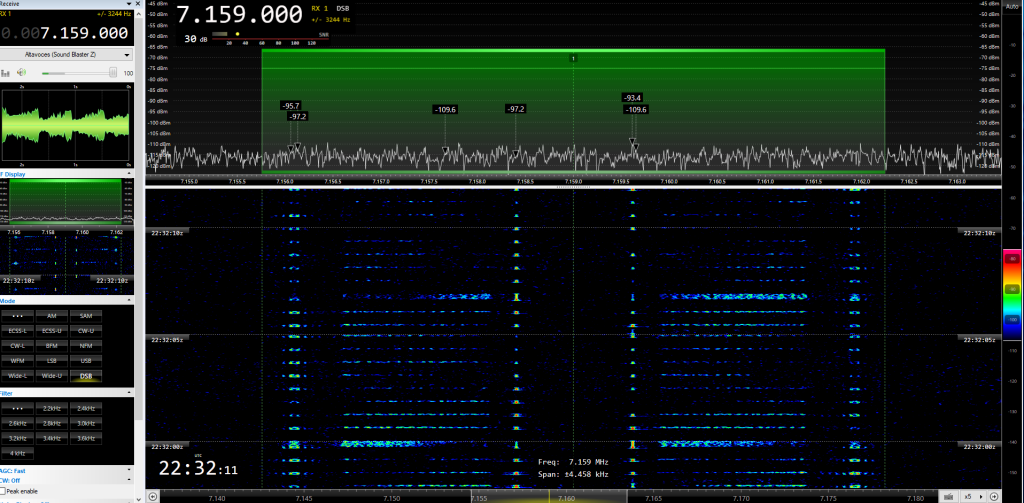
Audio
Video
LINK SLEW
The LINK-11 SLEW, single tone (SLEW = Single tone — serial — Link Eleven Waveform) is also used by NATO for the exchange of tactical data between naval, air and ground units.
Modulation: PSK‑8
ITU classification fo emissions: G1D
Bandwidth: 2.4 kHz
Baud rate: 2400 Bd
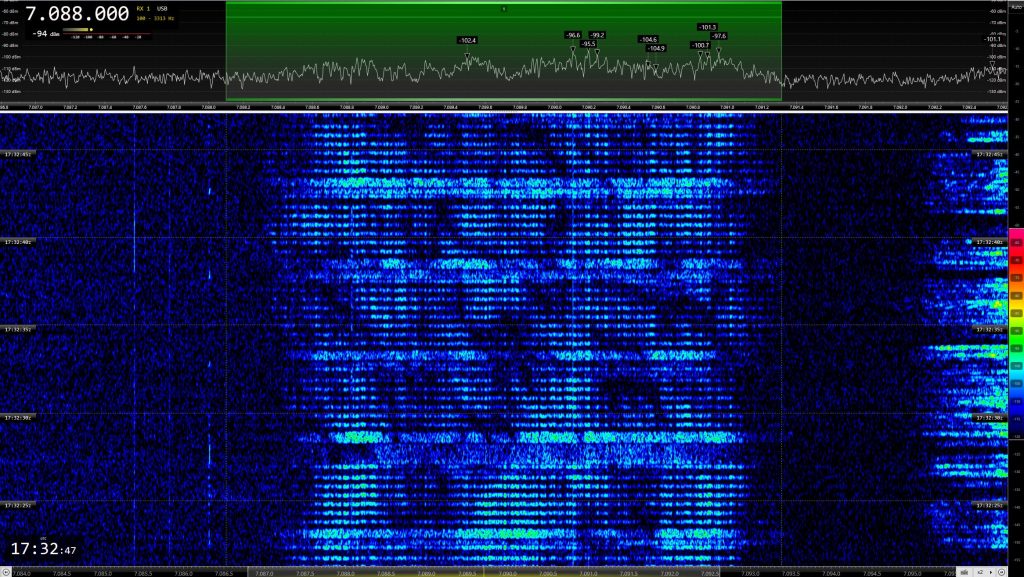
STANAG-4285
A NATO STANAG is a Standardization Agreement (STANdardization AGreement) that defines the processes, procedures, terms and conditions for common military or technical procedures or equipment between the member countries of the alliance. NATO specifies STANAG-4285 in “Characteristics of 1200÷2400÷3600 bits per second monotone modulators/demodulators for high frequency radio links”.
The modulation technique used in this mode consists of phase shift keying (PSK‑8) of a 1800 Hz single tone subcarrier. The modulation speed (symbol rate) is always 2400 Bd.
Modulation: PSK‑8
ITU classification of emissions code: G1D
Bandwidth: 2.4 kHz
Baud rate: 2400 Bd
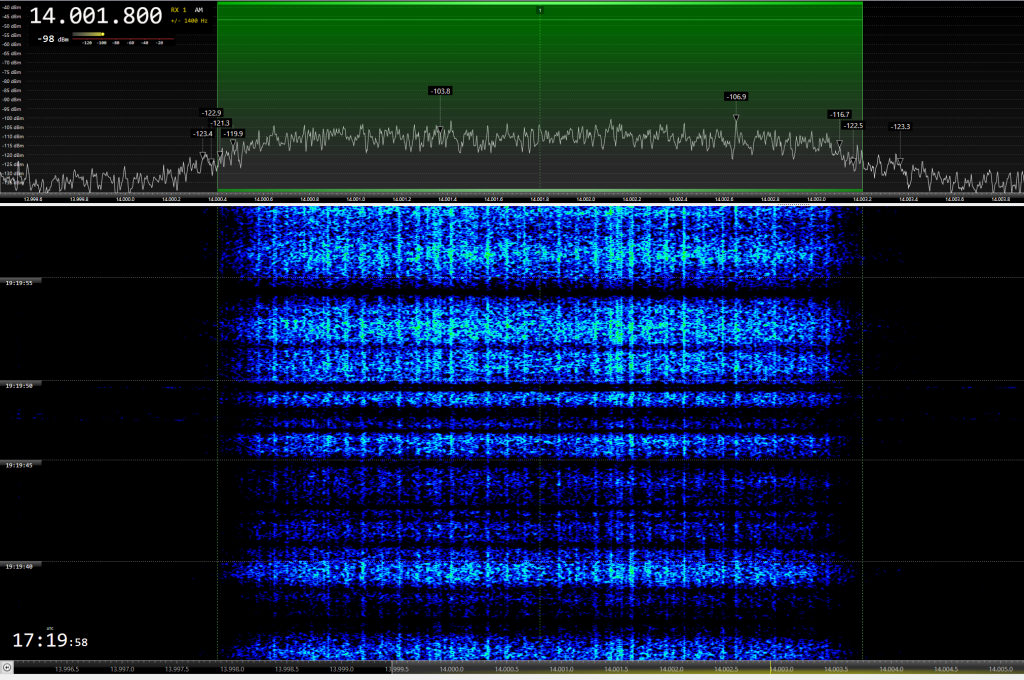
DPRK PSK 1200 ARQ
Modulation: PSK
ITU classification of emissions code: G1D.
Bandwidth: 1.2 kHz.
Mode from the Democratic People’s Republic of Korea (DPRK; North Korea)
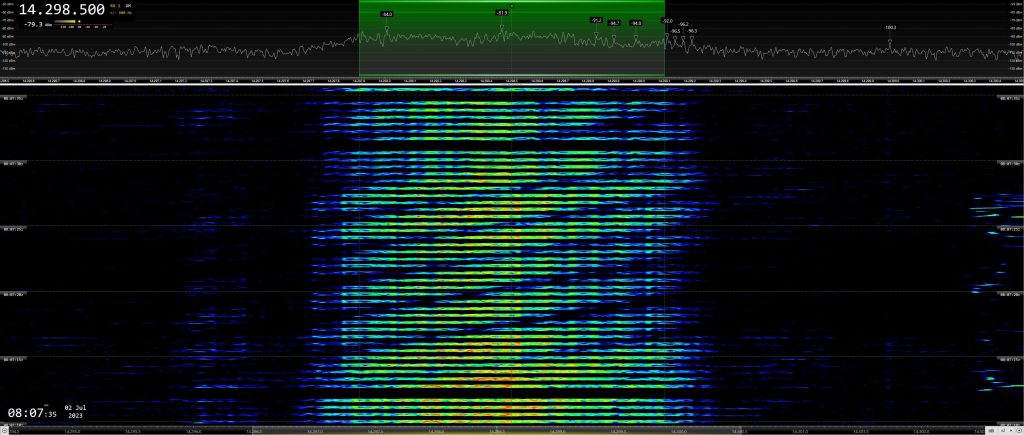
CHN 30
Burst system also known as PRC 30 after its country of origin, the People’s Republic of China.
Modulation: PSK‑4. 4 Tone preamble, 4 x 60 Bd. Pilot tone at 450 Hz
ITU classification of emissions code: G7D
Bandwidth: 2.5 kHz
Baud rate: 30 x 60 Bd
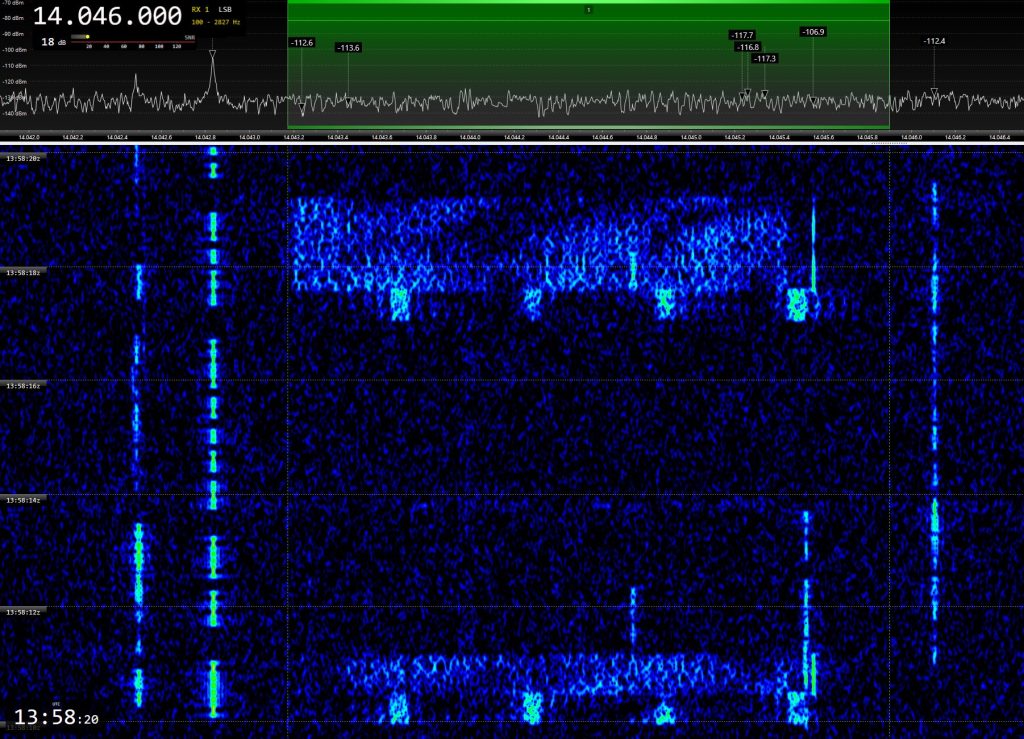
CHN 4+4
Named after its country of origin, the People’s Republic of China.
Modulation: DQPSK
ITU classification of emissions code: G7D
Bandwidth: 2.4 kHz
Baud rate: 8 x 75 Bd
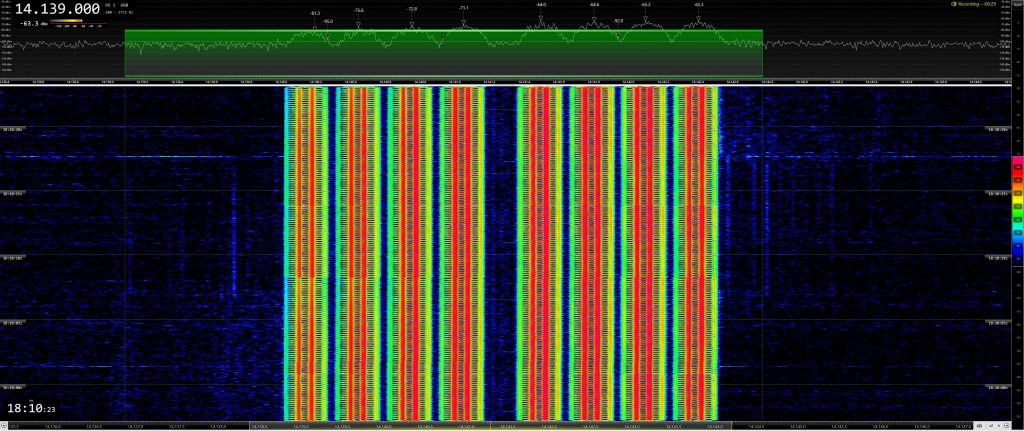
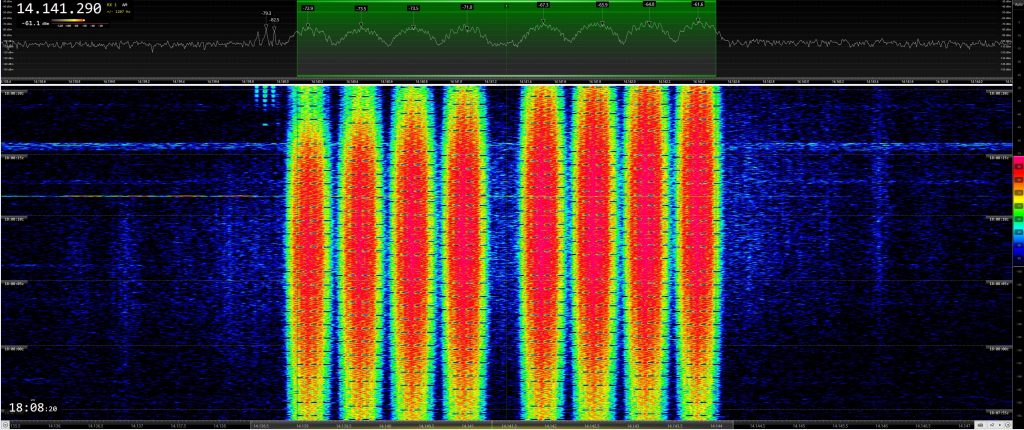
TDL
Tactical Data Link (TDL)
Modulation: PSK
Bandwidth: 1.2 kHz
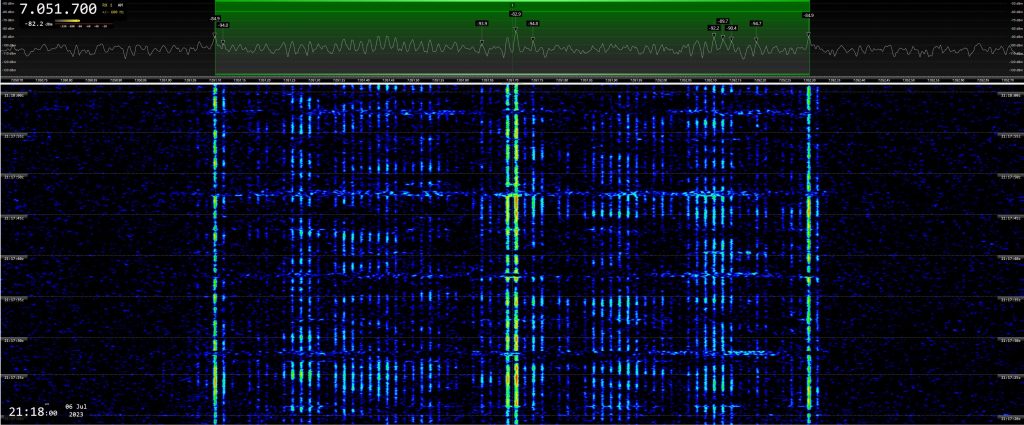
T‑230
RUS mode also known as “Mahovik” (from Russian Маховик: Flywheel). It can transmit voice and data.
Modulation: PSK‑2
BW ca 2.1 kHz
Baud rate: 1200 Bd
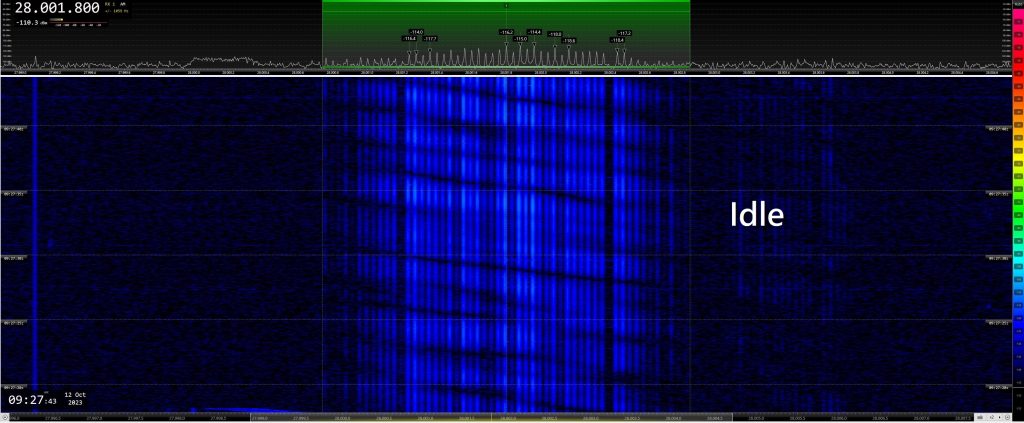
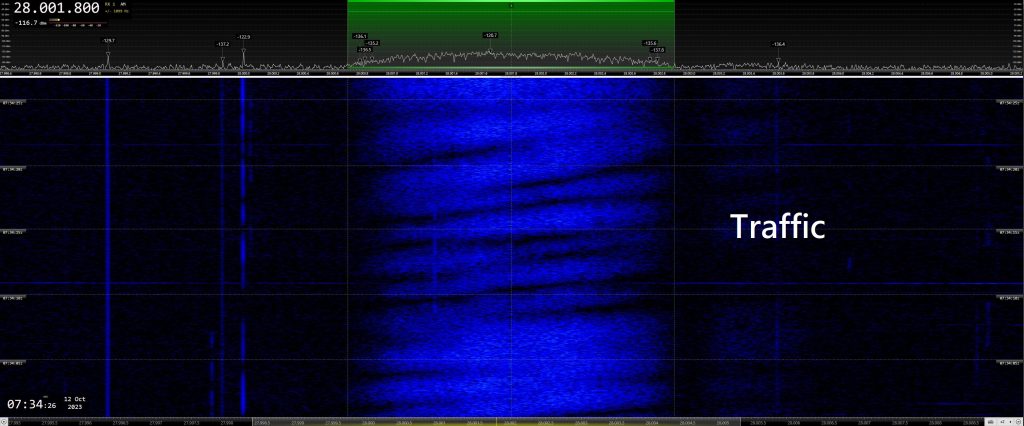
MIL-188 – 110A
MIL-STD-188 – 110 is a US Department of Defense standard for HF communications. This mode can transmit both data and voice with a range of interleaving modes and speeds for optimal propagation. It can operate in short bursts as well as long data links.
Modulation: PSK‑8
ITU classification of emissions code: G1D
Bandwidth: 2.4 kHz
Baud rate: 2400 Bd
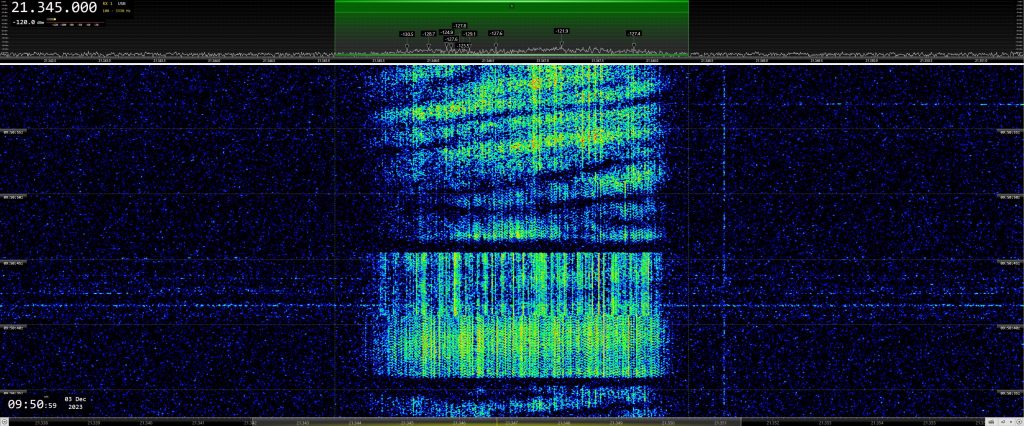
ISR Navy hybrid modem
The Israeli Navy hybrid modem is composed of three parts:
- A 2‑second long 6 tone preamble
- a part of parallel data transmission in QPSK
- a final part with serial data according to the MIL 188 – 110 standard: 1800 Hz carrier modulated in PSK8 at 2400 bauds.
